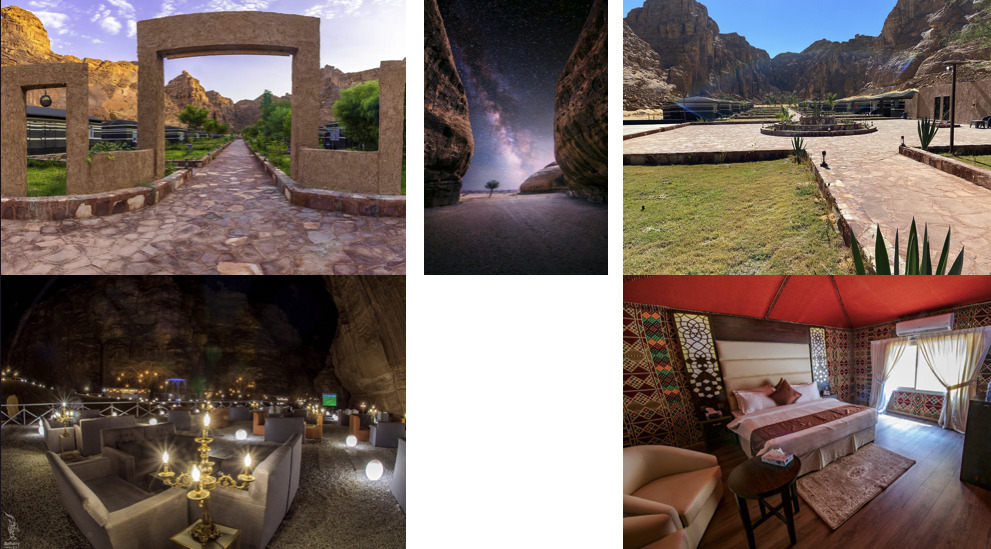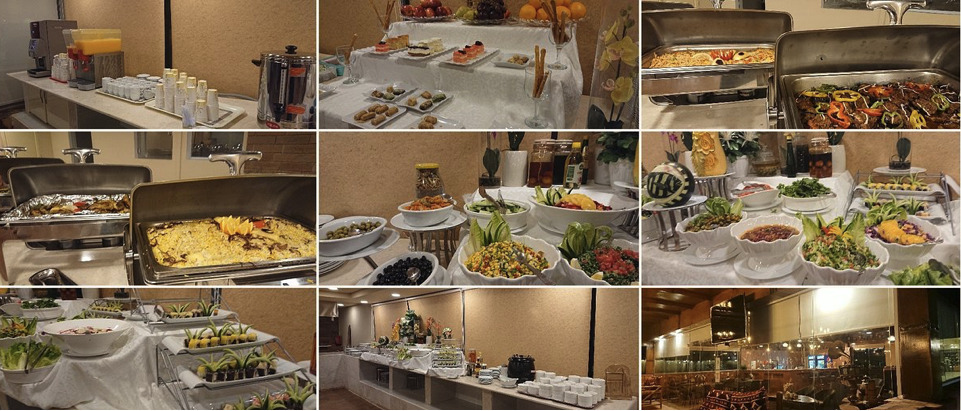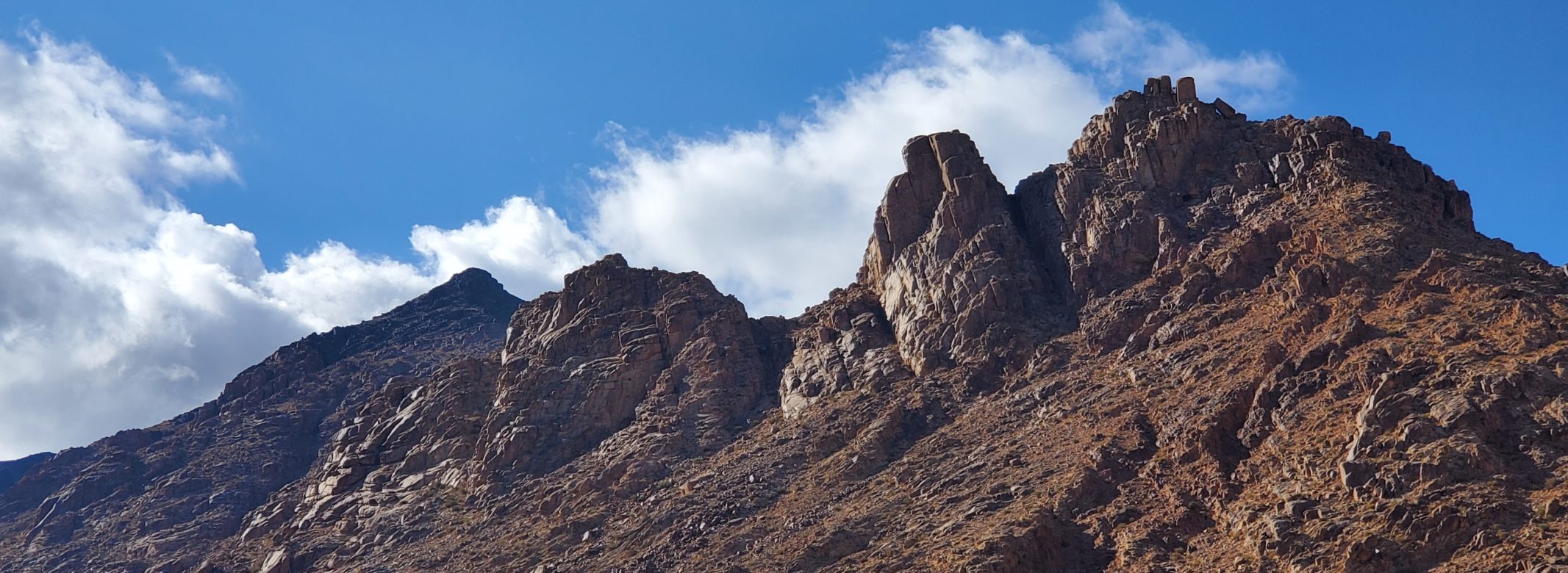Tour Itineraries
Upcoming Tours
| -- | Departure | Return | Price |
|---|---|---|---|
| Package C - Mt. Sinai in Saudi Arabia | December 11, 2024 | December 18, 2024 | $4,700 + Int'l Flight |

The above-mentioned fee covers the following:
- All Lodging and meals with soft drinks
- Tips for all guides, drivers, and handlers (But remember to leave a $1~2.- USD tip in the hotel room each morning.)
- e-Visa fees for Saudi Arabia
- Entrance Fees for all Museums and biblical sites
- Traveller's Insurance Fee
- Snacks, bottled water, and juices throughout the trip
The items not included in the above mentioned fee:
- International flight ticket
- Alcoholic drinks during meals
- Personal preference expenses; shopping/gifts, sundry items
- Tips for housekeeper

C- Wild Adventure in Saudi
Saudi Arabia & Mount Sinai Adventure (7 days/6 nights)

| Day | Sites | Hotel |
|---|---|---|
| Day 1 | Arrive Saudi Arabia | Swiss Inn Tabuk |
| Day 2 | Shuaib Kaf of Jethro, Ex. 4:18), Bir Musa(Moses' Well), Ein Musa(The Spring of Moses), Elim | Swiss Inn Tabuk |
| Day 3 | Split Rock(Ex. 17), Jabal al Lawz; Mtn. of Laws (Ex. 19-20), Golden Calf site (Ex. 32), 12 stone altars and ancient graveyards | Tent |
| Day 4 | Al-'Ula region: Gramel Mountains, Rainbow Rock, Mada'in Saleh (Migration), Old Market | Tent |
| Day 5 | Al-'Ula region: Elephant Rock, Dadan (Jer. 49:8) and Jabal Ikmah | Tent |
| Day 6 | Hiking Mt.Sinai or Tabuk city tour | Swiss Inn Tabuk |
| Day 7 | Depart Saudi Arabia |
Day 1 : Tabuk Airport pickup
Arrive Tabuk, Saudi Arabia
Stay at Swiss Inn Tabuk
Day 2 : Elim
- Elim (Al-Bad) (Exodus 2:15-16)
In the amazing biblical place called Elim, there were 12 streams and 70 palm trees - unique to this region. It is 3.7 miles away from Exodus landing point of Tayeb/ESM Valley. Also in this Hejaz region is Jethro's town of Al-Bad. 1-2 miles to the south are The Caves of Jethro ("Magha'ir Shu'ayb"). Archaeologists hold that these caves are 1st century A.D. Nabatean tombs. ("Magi" in Matt. 2:1-2) - Magna (Magna Tabuk: Elim, Exodu 15:27)- PalmsOasis/Moses’ Oasis (Exodus 15:27) Then they came to Elim, where there were 12 springs and 70 palm trees, and they camped there near the water.
Magna (Also called Makna) is an area along the coast of Aqaba in Saudi Arabia, which is on the Red Sea coast to the southwest of al-Bad. Local tradition also holds that "Bir al Saidni" located in the nearby coastal town of Magna as the very well from which Moses rolled away the stone to draw water for the flocks of Jethro's daughters. - Moses’ Well: (Exodus 2:15-16)
This is the very well where Moses helped protect Jethro’s seven daughters from the local shepherds and drew water for their sheep. Here Moses also met Zippora, Jethro’s daughter whom he married. Although the town’s name is Al-Bad the local people simply call it "Jethro".
Hotel (Swiss Inn Tabuk)
Day 3 : Split Rock & Mt. Sinai
- Split Rock (the rock at Rephidim, Exodus 17:6) Rephidim, the giant rock that split is located northwest of Jabal Maqla (Saudi name of Mt. Sinai). This split rock was discovered by Jim and Penny Caldwell in early 1990.
- Mt. Sinai (Jabel al Lawz/Jabal Maqla): (Exodus 19:17,18)
Mount Sinai is the holy place where God came, the location that served as the most solemn scene of all. Here God chose to give His Ten Commandments to His people. God came down in the midst of fire, and the entire mountain was filled with smoke. The distinctively black top of Jabal Maqla has clearly been scorched. As you gaze at the scorched mountain top, it will be a precious moment to imagine how the Israelites felt as God trumpeted and spoke through the fire. - Golden Calf Petroglyph (Exodus 32:21, Exodus 32:1–4)
When the people saw that Moses was so long in coming down from the mountain, the Israelites pressured Aaron to create a golden calf. All the above-mentioned traces are found in close proximity to Mt. Jabal Maqla. The huge altar, where archeologists surmise the golden calf was placed, is prominent! On the stone of the altar are numerous petroglyphs, depicting cows, calves, and Israelites dancing in a festival. - Graveyard (Exodus 32:28)
3,000 or 23,000 Israelites were put to death as result of their idol worship and sexual immorality (see I Cor. 10:8). The dead could not be buried inside the camp but in the large public graveyard outside. Penny and Jim Caldwell discovered the ancient graveyard approximately 6 miles away from Jabal Maqla Base. - The 12 Stone Altars In Front of Mt. Sinai (I Kings 18:31)
These stones are considered to be the stone pillars built according to the twelve tribes of Israel. Each diameter is two feet. Nine out of these twelve still stand at the site. The remaining three have not been located. Scholars and explorers once wondered where this marble had come from. Eventually a large white marble quarry was discovered three miles west of the foot of Mose's Mountain. This quarry is over 1500 feet higher in elevation from where these pillars are found today. - Accommodation in Tent
Day 4: Adventure Day In Al-'Ula (Dedan)
Al-'Ula was the second largest city in the Kingdom of Nabatea; Dedan in the Bible. (Ezkl. 27:15, Jer. 49:8). Al-'Ula is a living museum with a long history of Arabia. The many attractions include Saudi Arabia's first stone- lion tomb in the ancient capital of Dedan, an open library carved into the rock of Jabal Ikmah, and stone maze leading to mud brick houses from the 1100's A.D. in the old city of Al-'Ula.
- Rainbow Rock
- Mada'in Salih (Hegra) - UNESCO World Heritage Site in Saudia
- Accommodation in Tent
Day 5 : Adventure Day In Al-'Ula
- Elephant Rock
- Old Market street
- Jabal Ikmah
- Accommodation in Tent
Day 6 : Hiking Mt.Sinai or Tabuk city tour
- Hiking Mt. Sinai
- Tabuk City tour
- Hotel (Swiss Inn in Tabuk)
Day 7 : Going Back Home
- Final breakfast, check out, go to the airport, fly Saudi to USA
Items to Prepare for Pilgrimage Tour
Documents
- Passport and ID (Green Card for permanent residents)
- Visa to Saudi Arabia either in Smartphone or printout
- No covid-19 related document needed for both countries
General Items Checklist
- One checked luggage (65 lbs max.) for personal affects.
- You are allowed to carry on one handbag and one small bag during flight.
- Search weather forecast by dates for each country and pack accordingly. (dressing in layers is simpler than packing arctic clothing.)
- Sturdy yet comfortable walking shoes
- Sun gear according to your needs
- Cash for tipping the housekeepers (bring multiple $1-2 per day - USD bills)
- Travelers universal power adapter (Amazon link)
- Cc. under-garments, there is a four-day stretch w/o laundry service. Pack accordingly.
For Mount Sinai (Jabal al-Maqla) Hikers
- Hiking Shoes, Gloves, Hiking Sticks, Hat, Sunglasses, Hiking Jacket,
- Backpack
- Energy Bar
- Emergency Medical Kit (Bandage, antibiotic, Muscle pain reliever, depending on persons, tylenol, advil etc)

